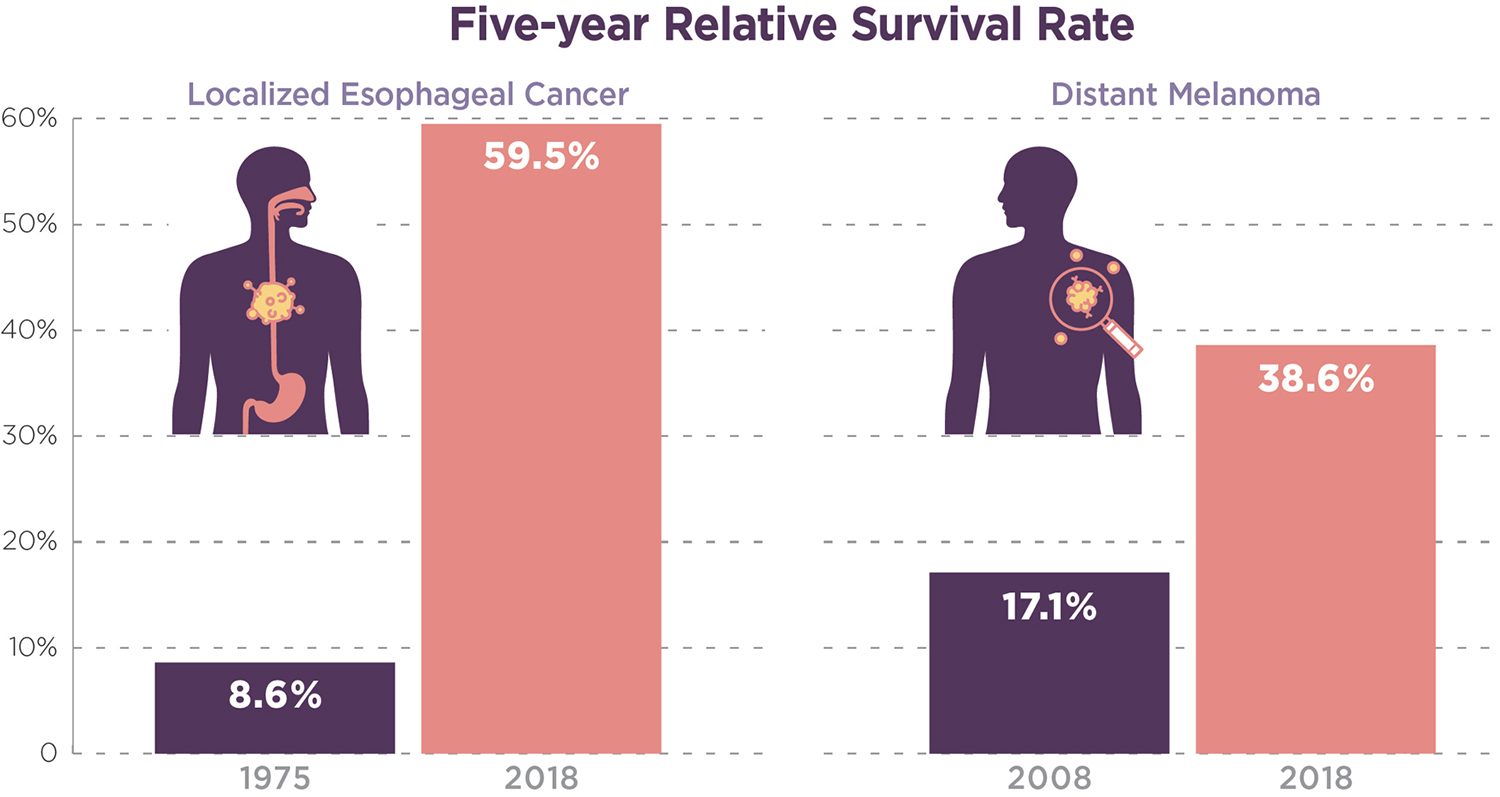SINCE 1991, CANCER DEATH RATES in the U.S. have dropped by 33%. Enhanced screening has allowed cancers to be caught earlier when the prognosis is better, while new therapies have improved and expanded treatment options.
In a study published November 2023 in Cancer Epidemiology, Biomarkers & Prevention, researchers looked to determine which cancer types have benefited the most from treatment advances alone. Using national cancer registry data for people diagnosed with 25 kinds of solid malignancies from 1975 to 2018, they analyzed survival trends by both cancer stage and type. By grouping people diagnosed at similar points in their cancer progression, researchers could determine if improved survival was due to better care instead of earlier detection.
Researchers found one of the biggest survival increases occurred among people with early-stage esophageal cancer. The five-year relative survival rate—which measures the percentage of people with cancer who are as likely to live at least five years beyond their diagnosis as people their age without cancer—jumped from 8.6% in 1975 to 59.5% in 2018. During that time, surgical approaches improved, and more patients began undergoing both surgery and radiation to treat their cancer.
Additionally, the five-year relative survival rate for people with metastatic melanoma climbed from 17.1% in 2008 to 38.6% in 2018. The study authors attributed this change to several targeted therapy and immunotherapy drugs that have been approved for advanced melanoma in the past 13 years. In 2011, the Food and Drug Administration approved the first two of these drugs: the targeted therapy Zelboraf (vemurafenib), which blocks the activity of a mutation found in about half of metastatic melanoma cases, and the immunotherapy Yervoy (ipilimumab).

Graphics by Pikovit / Shutterstock.com
Source: Cancer Epidemiology, Biomarkers & Prevention
Cancer Today magazine is free to cancer patients, survivors and caregivers who live in the U.S. Subscribe here to receive four issues per year.





